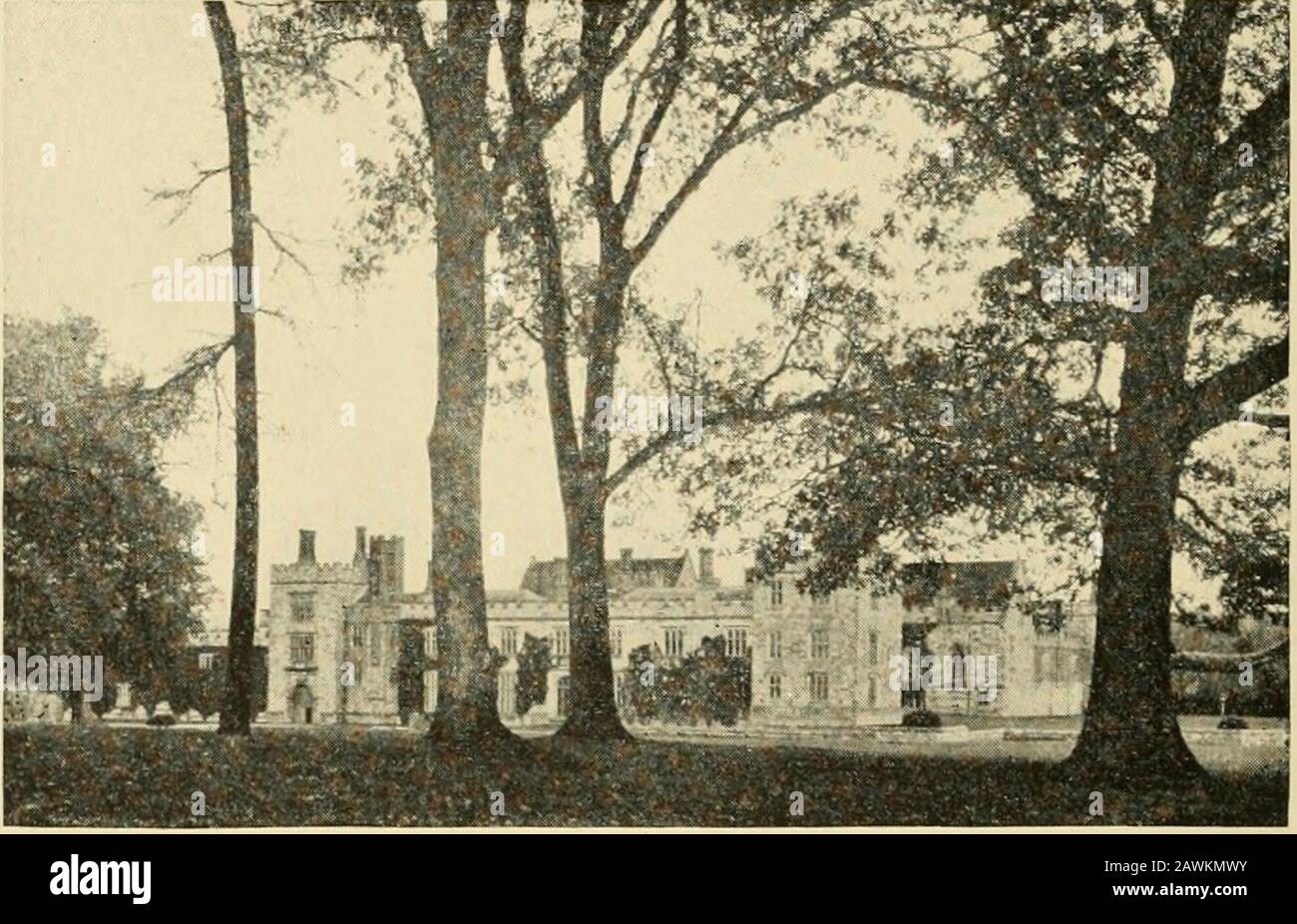Literary by-paths in old England . on shall bereplaced by one bearing exact likeness to thatit has displaced. Thus the newest houses lookas ancient as the oldest. Penshurst Place is not exempt from this rulewhich enforces continuity with the past. Al-though various additions have been made to themansion, the harmony of its outward semblanceis undisturbed. Between the old banquetinghall of the fourteenth century and the new wingof the nineteenth century there is no discord ;loyalty to the past has shaped every new stoneand fitted it so deftly into its place that even theold builders themselves

Image details
Contributor:
The Reading Room / Alamy Stock PhotoImage ID:
2AWKMWYFile size:
7.2 MB (450.3 KB Compressed download)Releases:
Model - no | Property - noDo I need a release?Dimensions:
1971 x 1268 px | 33.4 x 21.5 cm | 13.1 x 8.5 inches | 150dpiMore information:
This image is a public domain image, which means either that copyright has expired in the image or the copyright holder has waived their copyright. Alamy charges you a fee for access to the high resolution copy of the image.
This image could have imperfections as it’s either historical or reportage.
Literary by-paths in old England . on shall bereplaced by one bearing exact likeness to thatit has displaced. Thus the newest houses lookas ancient as the oldest. Penshurst Place is not exempt from this rulewhich enforces continuity with the past. Al-though various additions have been made to themansion, the harmony of its outward semblanceis undisturbed. Between the old banquetinghall of the fourteenth century and the new wingof the nineteenth century there is no discord ;loyalty to the past has shaped every new stoneand fitted it so deftly into its place that even theold builders themselves would be deceived couldthey revisit the work of their hands. Although Penshurst has been the residenceof a noble family almost from the time of the63 LITERARY BY-PATHS Norman Conquest, it was not until the middleof the sixteenth century that it became thehome of the Sidneys. It was to Sir WilliamSidney, a great favourite and faithful servant ofHenry VIII, that Edward VI, in the year ofhis death, granted the manor of Penshurst. But. Penshurst Place Sir William had brief enjoyment of the gift, dying as he did in the year in which he receivedit. His son, Sir Henry Sidney, the father ofPhilip, succeeded, and he, in 1585, erected thetower which now forms the central feature ofthe north front. Over the gateway of this toweris still to be seen a stone tablet bearing an in-scription which reads thus: 64 IN OLD ENGLAND The most religious and renowned PrinceEdward the Sixth, Kinge of England, Franceand Ireland, gave this house of Pencester withthe mannors, landes and appurtences thereuntobelongings, unto his trustye and well-belovedservant, Syr William Sidney, Knight Bannaret, servinge him from the tyme of his birth unto hiscoronation, in the offices of chamberlayne andstuarde of his household, in commemoration ofwhich most worthie and famous Kinge, SirHenry Sidney, Knight of the most noble orderof the garter, Lord President of the Councilestablished in the Marches of Wales, sonne andheyre